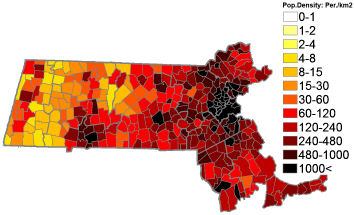“And then I say [sʌuθ] weird”: /aʊ/-raising in Massachusetts
Kamil Kaźmierski/ˌkamil kaʑˈmjɛrski/
Faculty of English at AMU in Poznań
Poznań Linguistic Meeting :: September 18th, 2021
kamil.kazmierski@amu.edu.pl
wa.amu.edu.pl/wa/kazmierski_kamil
Example
"Well, I didn't find out about that until, like, recently."
Canadian raising
mouth /aʊ/ (and price /aɪ/) are:
"High" before voiceless obstruents:
- shout, house: [ʌʊ]
- white, knife: [ɐɪ]
"Low" elsewhere:
- how, found, houses: [ɑʊ]
- high, find: [aɪ]
Joos, M. 1942. "A phonological dilemma in Canadian English". Language 18, 141–144.
/aɪ/-raising in North America (Labov et al. 2006)
60 Hz difference in F1 of nuclei in pre-voiceless /aɪ/ vs. elsewhere
- Canada
- the North
- the North Central Region
- Eastern New England
- Western Pennsylvania

Labov, W., Ash, S., & Boberg, C. (2006). The Atlas of North American English. Mouton de Gruyter. https://doi.org/10.1515/9783110167467
/aʊ/-raising in North America
| Place | Source |
|---|---|
| Fredricksberg, VA | Primer (1890) |
| Coastal Maine and southern New Hampshire | Kurath & McDavid (1961) |
| Canada | Joos (1942) |
| "northern states" | Thomas (1961) |
| Martha's Vineyard, MA | Labov (1963) |
| Charlston, South Carolina | Chambers (1973) |
| Minneapolis, MN & Rochester, NY | Vance (1987) |
| Calais, ME | Miller (1989) |
| Ann Arbor, MI | Dailey-O'Cain (1997) |
| "Northern parts of Midwest and West" | Gordon (2004) |
| Vermont | Roberts (2007) |
Types of conditioning of raising
/aɪ/
Voice-based (Canada, Joos (1942)):
- sight [ʌi] (raised)
- side [aɪ] (not raised)
Types of conditioning of raising
/aɪ/
Voice-based (Canada, Joos (1942)):
- sight [ʌi] (raised)
- side [aɪ] (not raised)
/aʊ/
Voice-based (Canada, Joos (1942)):
- shout [ʌu] (raised)
- found [aʊ] (not raised)
Context-free (e.g. Vermont, Roberts (2007)):
- about [ʌu]
- found [ʌu]
- how [ʌu]
Many distinct New England features (e.g. r-lessness, PALM and START fronting, NORTH/FORCE distinction, MARY/MARRY/MERRY distinction) are receding (Stanford 2019).
How does /aʊ/-raising fit into this picture?
Some existing research on /aʊ/-raising in New England
Labov (1963)
- Martha's Vineyard in Eastern Massachusetts
- Some speakers with context-free raising, some voice-based (with exceptions)
- Raising as local identity marker (island-oriented fishermen)
- Described as a new development
Boberg (2010) (4 speakers)
- eastern New England
- 110Hz voicing-based difference in F1 of /aʊ/
- Labov, W. (1963). The social motivation of a sound change. Word, 19(3), 273–309.
- Boberg, C. (2011). The English Language in Canada. Cambridge University Press.
Kim et al. (2019) all of New England (626 spkrs)
/aɪ/ raising

No /aʊ/ raising

Kim, C., Reddy, S., Stanford, J. N., Wyschogrod, E., & Grieve, J. (2019). Bring on the Crowd! Using Online Audio Crowd-Sourcing for Large-Scale New England Dialectology and Acoustic Sociophonetics. American Speech, 94(2), 151–194. https://doi.org/10.1215/00031283-7251252
Kim et al. (2019) all of New England
Context-free /aʊ/ raising?

New England's Hub: Eastern Massachusetts



Stanford's (2019) Hub study
- "/aʊ/ tends to be fronted [my emphasis] in the not voiceless environment"
- "this may be a topic for future study"

Stanford, J. (2019). New England English: Large-scale acoustic sociophonetics and dialectology. New York, NY: Oxford University Press.
Research questions
- Is /aʊ/ raising, backing, or both?
- How is /aʊ/ affected by voicing of following sound?
- Are speakers aware of variation in /aʊ/?
Speakers
20 women (age range: [18, 29], median: 20)

Method
- One-hour-long interviews (phonetics lab at UMass, Amherst)
- Automatic Speech Recognition with WebMAUS
- Force-alignment with FAVE-Align (Rosenfelder et al. 2014)
- Recordings and TextGrids for 17 spkrs available at: osf.io/mfu5y
- Automatic acoustic measurements with FAVE-Extract (Rosenfelder et al. 2014)
- Single-point measurements: /aɪ/: at F1 maximum; /aʊ/: halfway between F1 maximum and onset
- Incremental measurements, in steps of 15% of a vowel's duration
- Analyzed in (R Core Team 2021)
- Datasets presented here:
- /aɪ/: 15,296 tokens; 477 word types
- /aʊ/: 2,648 tokens; 161 word types
- only vowels at least 50ms long included
Results 1: Single-point measurements
Voiced-based allophony
Voice-based /aɪ/ raising

Voice-based /aɪ/ raising

No voice-based /aʊ/ raising

Voice-based /aɪ/ raising

Voice-based /aʊ/ backing

Voice-based /aʊ/ backing

Voice-based /aʊ/ backing

Context-free raising
Context-free raising of /aʊ/ with regard to what?

Context-free raising of /aʊ/ with regard to what?


Context-free raising of /aʊ/ with regard to TRAP


Single-point measurements - summary of results:
- /aʊ/ is backed, but not raised before voiceless obstruents
- /aʊ/ is raised context-free
- ⚠ only the nucleus considered ⚠
Results 2: Dynamic aspects of /aʊ/
Generalized Additive Modeling (GAM)

Generalized Additive Modeling (GAM)

Generalized Additive Modeling (GAM)


Below or above the level of consciousness?
Are speakers aware of /aʊ/?
Yes?
"And then I say South weird [...]"
"I say outfit [...]"
"I say about [...]"
No?
" [...] I'll say things around my house"
"He would talk about [...] the roundabout [...]"
Attitude to Eastern Massachusetts
Negative
- "These people are scary!"

Positive
- "[...] he came to class, like, wicked prepared [...]"

Conclusions
Regardless of environment:
- nucleus of /aʊ/ is raised with regard to the lowest vowel (i.e. to /æ/)
Before voiceless obstruents:
- nucleus of /aʊ/ is backed
- off-glide of /aʊ/ is raised
Realization of /aʊ/ may carry indexical meaning
Thank you!
Regardless of environment:
👉 nucleus of /aʊ/ is raised
Before voiceless obstruents:
👉 nucleus of /aʊ/ is backed
👉 off-glide of /aʊ/ is raised

This research was supported by a Fulbright Commission grant
Recordings and Textgrids (17 spkrs): osf.io/mfu5y